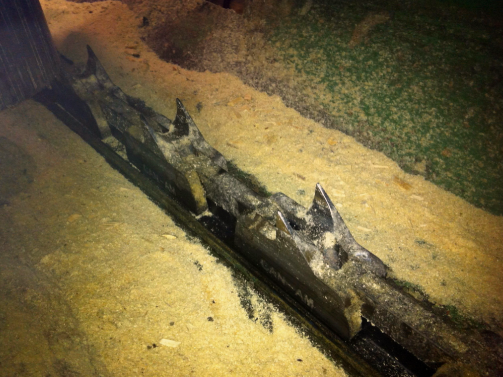When we talk about lubrication systems, it can cover a very broad range of requirements, system styles, configurations and more. It’s a really wide brush! The main concept of any lubrication system, whether it’s bearings or saw guide systems, is that you need to apply a small amount of lubricant…often. This maintains a very fine lubricant film on components, and eliminates metal to metal contact.
In really rough terms, you calculate the area of the parts and multiply that area by a film thickness (usually 0.002”) and that determines the cubic volume that you should apply at roughly 2 hour intervals. This is your starting point. There are, however, other factors to consider like water washout, contamination, speed and temperature. These conditions may require you to add or subtract lube as required.
In the case of a saw guide system the goal is to maintain a constant oil to water ratio applied to the saws. For example, if you’re applying 0.1 gallons per minute of water per saw, you should try to maintain 0.05 gallons per hour of oil. This 120:1 mixture rate, in my experience, provides the best water to oil concentration to deliver cooling and lubrication during idle. In the cut we generally take that flow rate up by 35-50% to provide additional cooling. That’s our starting point and we adjust up or down based on feed speed, wood species, moisture content and a few other things
When dealing with bearings, if they’re running in a very dirty environment, the lubricant you are pumping into the bearings will require a little extra oil to create a positive pressure and prevent the ingestion of those contaminants. Chains running in sawdust, for example, may require 5-8 times more due to the wicking action the sawdust has on the oil, if you want to ensure you’ve left enough behind to lubricate.
Application can be an even more important factor. I’ve seen many systems set up to supply a bunch of lube all at once, then the system shuts off and waits for a period of time before the next application. This creates a flood-starve scenario, where the lubricant applied is literally pumped through the bearing, with most of it getting wasted. After the lube is wicked away, or washed out, your bearing is left running with an insufficient amount of lube. So how the lube is applied will also have a huge impact on performance.
As I said before, the best scenario is to apply a small amount often which will maintain an optimal level of film evenly over time.
Author: Dean Maier
Dean has been in the automated lubrication business for 25 years, with 85% of that time spent in forestry applications. We are delighted to have his insight with this latest blog.
Industrial Autolube International Inc.
Do you want the next article delivered to your Inbox? Subscribe here for ideas and tips on getting the most out of your mill.

